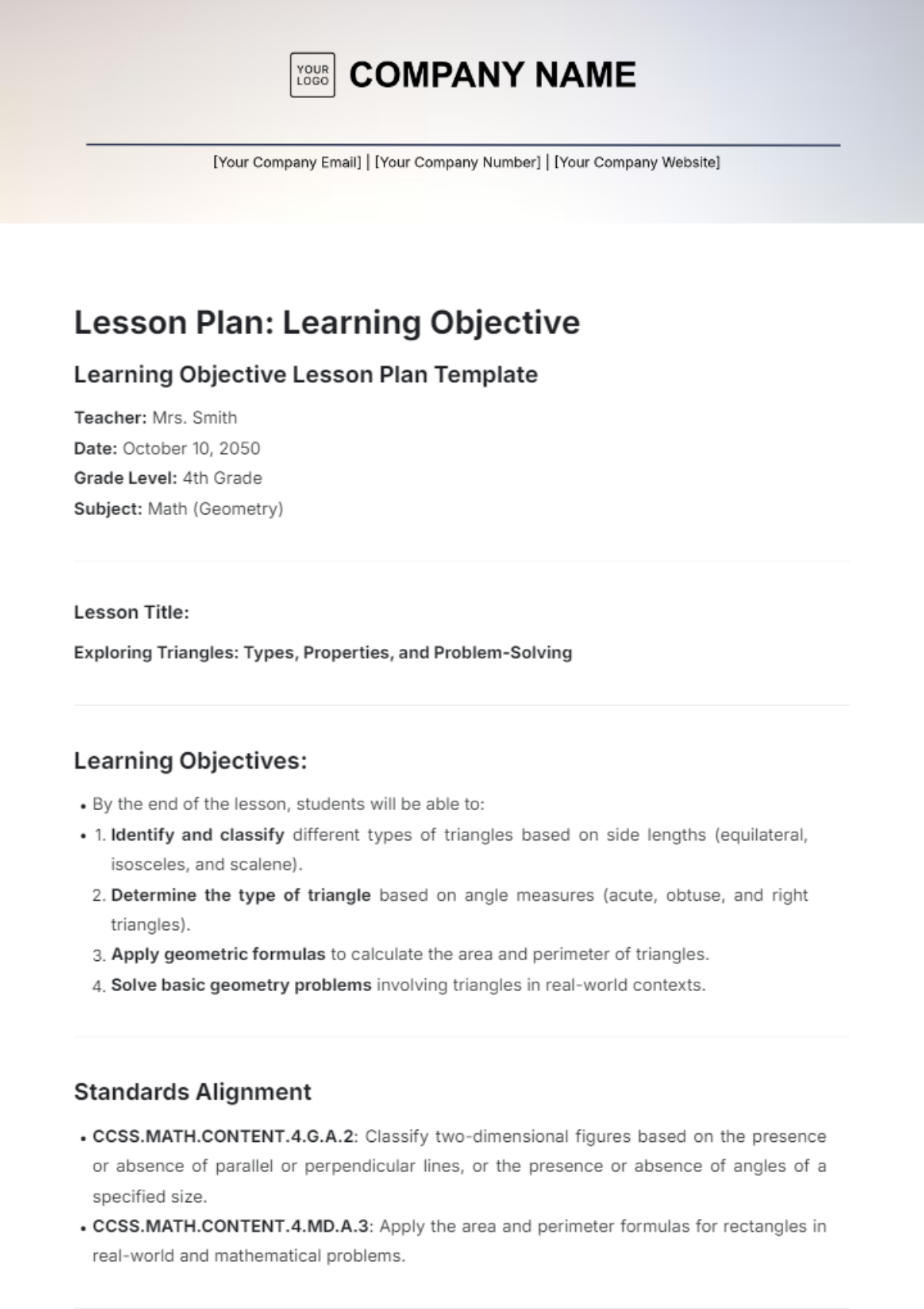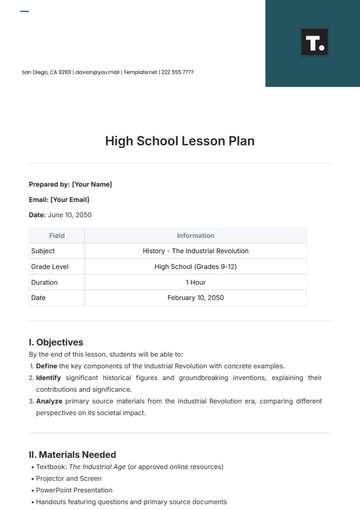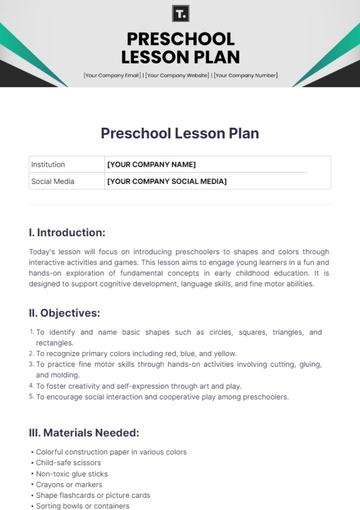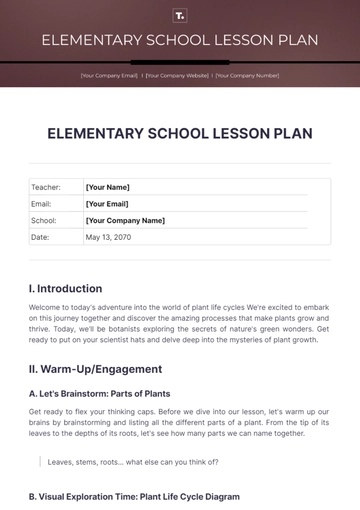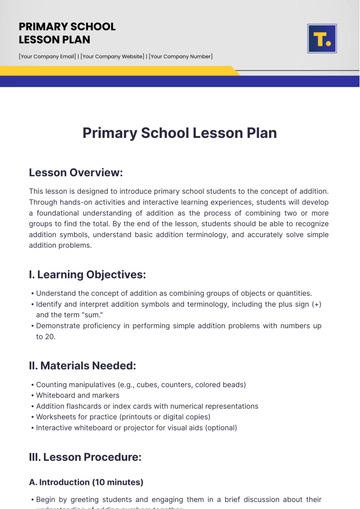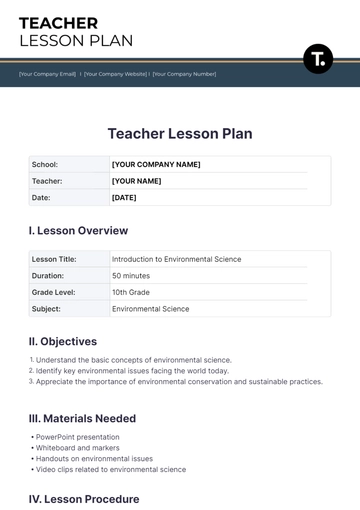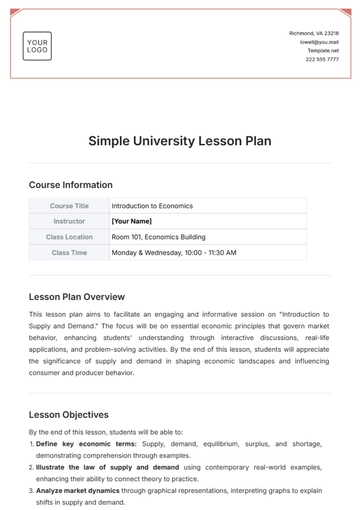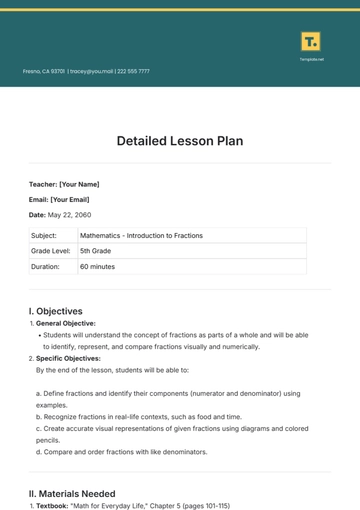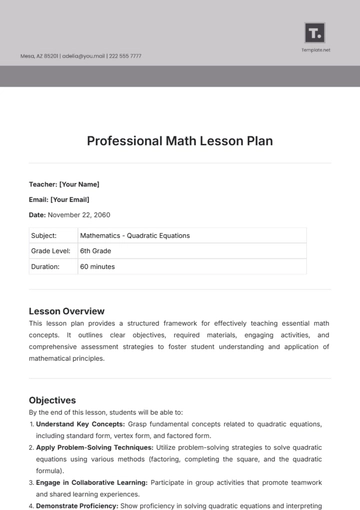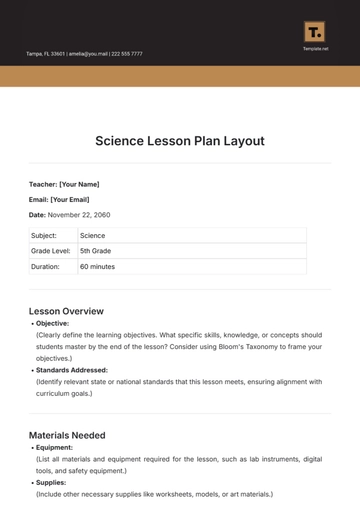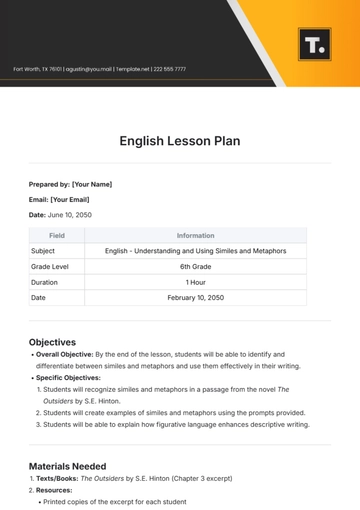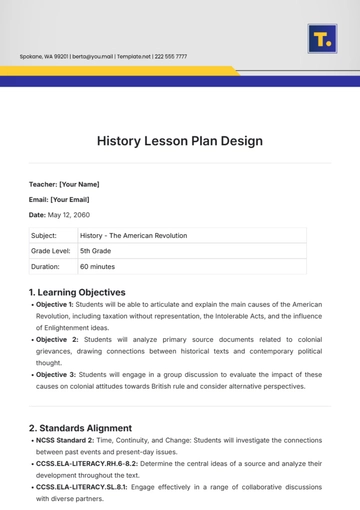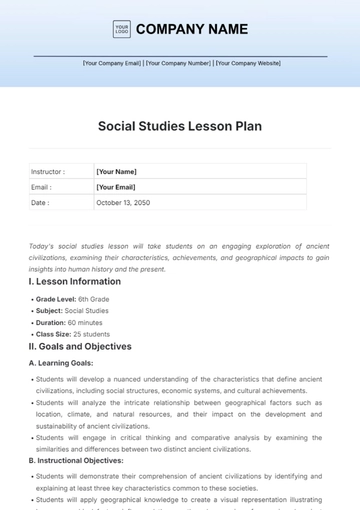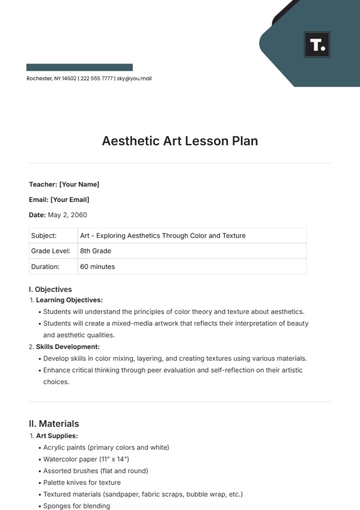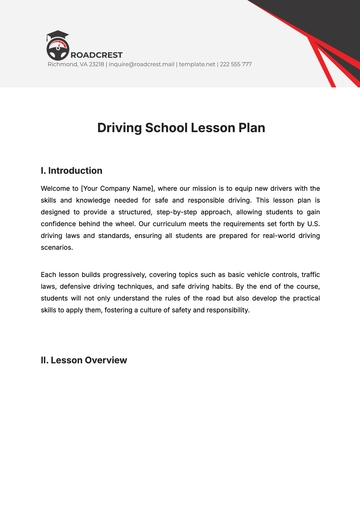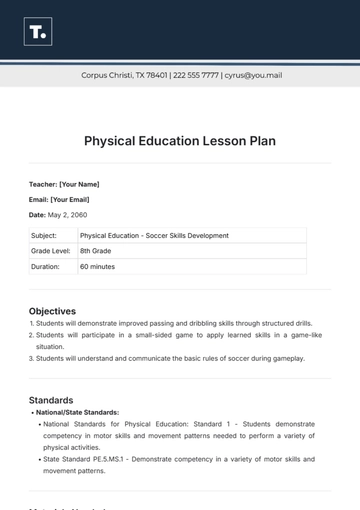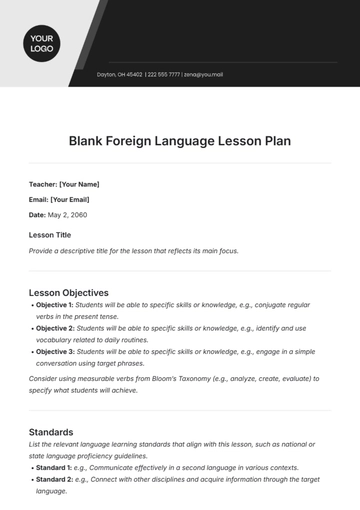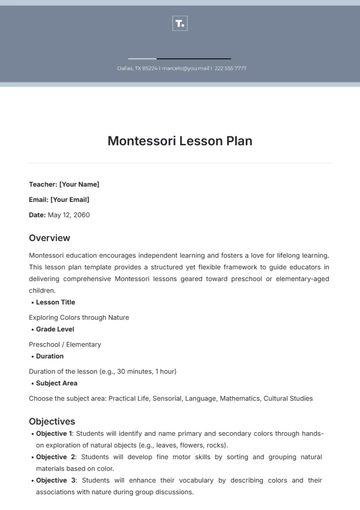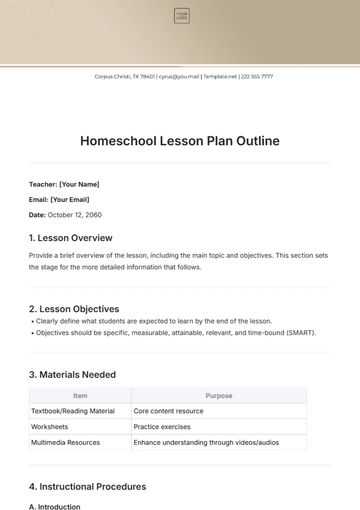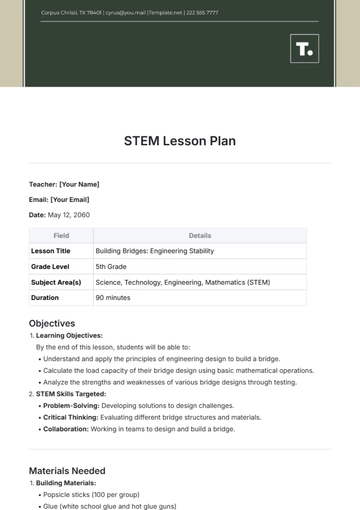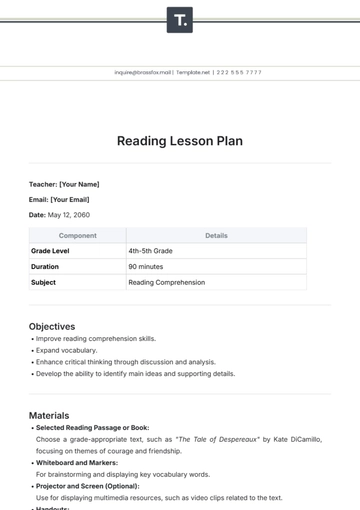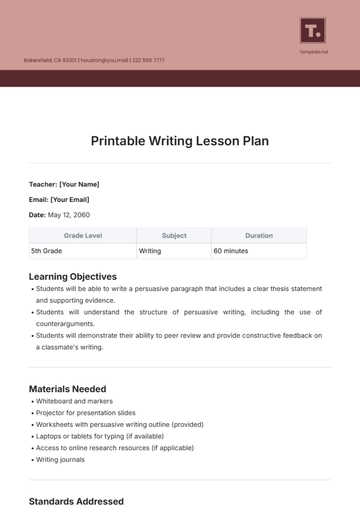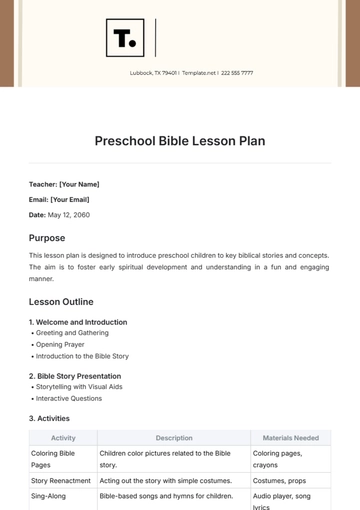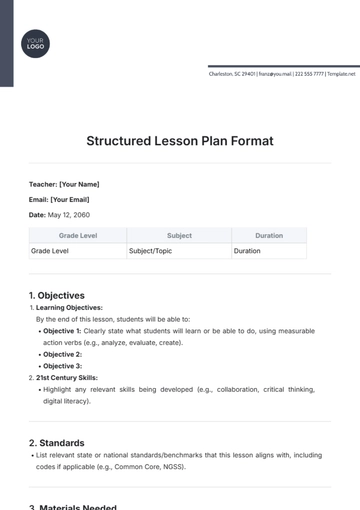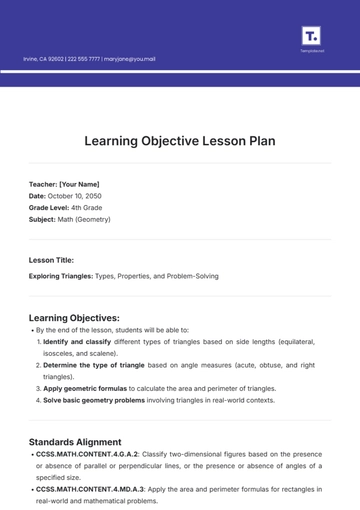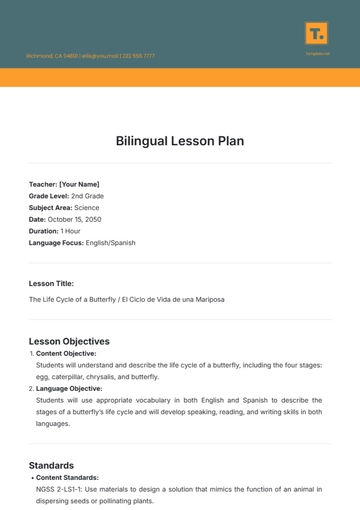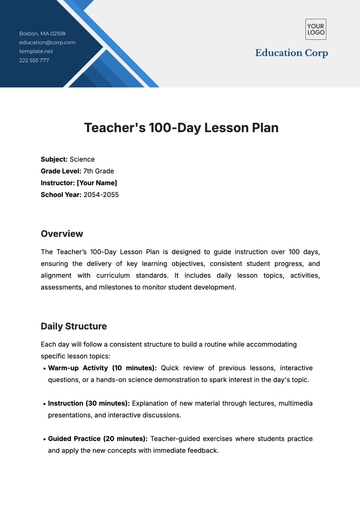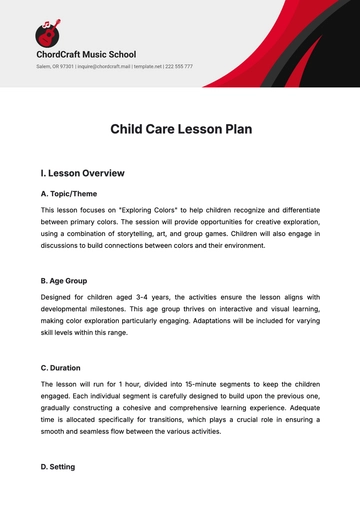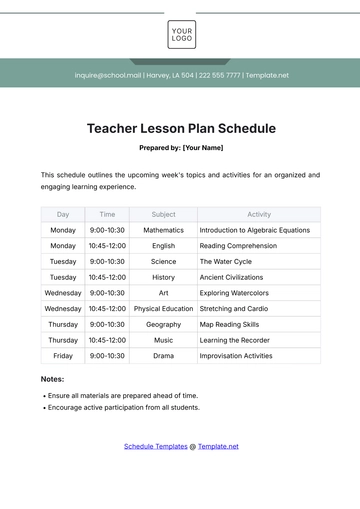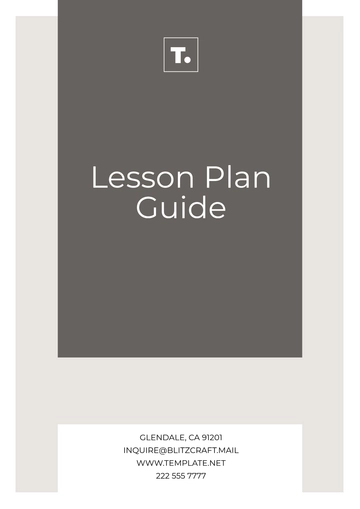Learning Objective Lesson Plan
Teacher: [Your Name]
Date: October 10, 2050
Grade Level: 4th Grade
Subject: Math (Geometry)
Lesson Title:
Exploring Triangles: Types, Properties, and Problem-Solving
Learning Objectives:
Standards Alignment
CCSS.MATH.CONTENT.4.G.A.2: Classify two-dimensional figures based on the presence or absence of parallel or perpendicular lines, or the presence or absence of angles of a specified size.
CCSS.MATH.CONTENT.4.MD.A.3: Apply the area and perimeter formulas for rectangles in real-world and mathematical problems.
Materials Needed
Geometry toolkits (rulers, protractors)
Triangle cut-outs
Whiteboard and markers
Triangle classification worksheet
Projector for visual aids
Colored pencils for highlighting different triangles
Quiz sheets for assessment
Introduction
Hook or Opening Activity:
Show images of famous structures (e.g., pyramids, bridges) that contain triangular shapes. Ask, “What shapes do you see in these pictures? Why do you think triangles are important in construction?” This will prompt curiosity about triangles in the real world.
Review Prior Knowledge:
Lesson Procedures
Direct Instruction (15 minutes):
Guided Practice (15 minutes):
Distribute triangle cut-outs to each student and have them use rulers and protractors to measure the sides and angles.
"Now, let’s classify these triangles based on both their sides and angles. Work with a partner to measure and classify the triangles you have."
Walk around the room to assist students as needed.
Independent Practice (20 minutes):
Give students a worksheet with various triangles to classify. The worksheet will include triangles that students need to identify by both sides and angles.
Have them calculate the perimeter of each triangle and, for the last two problems, solve for the area using the provided measurements.
Group or Pair Work (10 minutes):
"Now that you’ve practiced on your own, work in small groups to create real-world problems that involve triangles. For example, you might design a garden bed shaped like a triangle and calculate how much material you need to surround it."
Differentiation Strategies
For advanced students: Provide challenging problems involving the application of the Pythagorean theorem (for right triangles).
For struggling students: Offer additional visual aids with labeled triangles and pre-measured sides and angles. Provide one-on-one assistance as needed.
For ELL students: Use visuals and hands-on activities to support comprehension. Pair them with strong English speakers for group work.
Assessment
Formative Assessment:
Use an exit ticket where students write down one triangle they classified during the lesson and how they classified it (by sides and angles).
"Before you leave, please answer this question: What kind of triangle has two equal sides? Write down your answer and turn it in."
Summative Assessment:
Closure (5 minutes)
Recap the lesson:
"Today, we learned about different types of triangles based on their sides and angles. Can anyone give an example of where they’ve seen a triangle in real life?"
Ask students to share examples like pizza slices, bridges, or road signs, and reinforce the importance of triangles in both math and daily life.
Encourage students to complete any unfinished work on their worksheet for homework.
Reflection (Post-Lesson)
What went well?
What could be improved?
Next steps for future instruction?
Plan Templates @ Template.net
